Rachmaninoff D minor Sonata Op 28 II Lento Zoltán Kocsis, analysis with sheet music
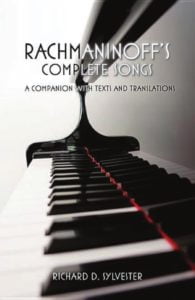
Piano Sonata No. 1 in D minor, Op. 28, is a piano sonata by Sergei Rachmaninoff, completed in 1908. It is the first of three “Dresden pieces”, along with Symphony No. 2 and part of an opera, which were composed in the quiet city of Dresden, Germany.
It was originally inspired by Goethe‘s tragic play Faust; although Rachmaninoff abandoned the idea soon after beginning composition, traces of this influence can still be found. After numerous revisions and substantial cuts made at the advice of his colleagues, he completed it on April 11, 1908. Konstantin Igumnov gave the premiere in Moscow on October 17, 1908. It received a lukewarm response there, and remains one of the least performed of Rachmaninoff’s works.
It has three movements, and takes about 35 minutes to perform. The sonata is structured like a typical Classical sonata, with fast movements surrounding a slower, more tender second movement. The movements feature sprawling themes and ambitious climaxes within their own structure, all the while building towards a prodigious culmination. Although this first sonata is a substantial and comprehensive work, its successor, Piano Sonata No. 2 (Op. 36), written five years later, became the better regarded of the two. Nonetheless, it, too, was given serious cuts and opinions are mixed about those.
Background
In November 1906, Rachmaninoff, with his wife and daughter, moved to Dresden primarily to compose a second symphony to diffuse the critical failure of his first symphony, but also to escape the distractions of Moscow. There they lived a quiet life, as he wrote in a letter, “We live here like hermits: we see nobody, we know nobody, and we go nowhere. I work a great deal,” but even without distraction he had considerable difficulty in composing his first piano sonata, especially concerning its form.
The original idea for it was to be a program sonata based on the main characters of the tragic play Faust by Johann Wolfgang von Goethe: Faust, Gretchen, and Mephistopheles, and indeed it nearly parallels Franz Liszt‘s own Faust Symphony which is made of three movements which reflect those characters. However, the idea was abandoned shortly after composition began, although the theme is still clear in the final version.
Rachmaninoff enlisted the help of Nikita Morozov, one of his classmates from Anton Arensky‘s class back in the Moscow Conservatory, to discuss how the sonata rondo form applied to his sprawling work. At this time he was invited, along with Alexander Glazunov, Nikolai Rimsky-Korsakov, Alexander Scriabin, and Feodor Chaliapin, to a concert in Paris the following spring held by Sergei Diaghilev to soothe France–Russia relations, although Diaghilev hated his music. Begrudgingly, Rachmaninoff decided to attend only for the money, since he would have preferred to spend time on this and his Symphony No. 2 (his opera project, Monna Vanna, had been dropped). Writing to Morozov before he left in May 1907, he expressed his doubt in the musicality of the sonata and deprecated its length, even though at this time he had completed only the second movement.
On returning to his Ivanovka estate from the Paris concert, he stopped in Moscow to perform an early version of the sonata to contemporaries Nikolai Medtner, Georgy Catoire, Konstantin Igumnov, and Lev Conus. With their input, he shortened the original 45-minute-long piece to around 35 minutes. He completed the work on April 11, 1908. Igumnov gave the premiere of the sonata on October 17, 1908, in Moscow, and he gave the first performance of the work in Berlin and Leipzig as well, although Rachmaninoff missed all three of these performances.
Composition

Movement 1.
The piece is structured as a typical sonata in the Classical period: the first movement is a long Allegro moderato (moderately quick), the second a Lento (very slow), and the third an Allegro molto (very fast).
- Allegro moderato (in D minor, ends in D major) The substantial first movement Allegro moderato presents most of the thematic material and motifs revisited in the later movements. Juxtaposed in the intro is a motif revisited throughout the movement: a quiet, questioning fifth answered by a defiant authentic cadence, followed by a solemn chord progression. This densely thematic expression is taken to represent the turmoil of Faust’s mind. The movement closes quietly in D major.
- Lento (in F major) In key, the movement pretends to start in D major before settling in the home key of F major. Although the shortest in length and performance time, the second movement Lento provides technical difficulty in following long melodic lines, navigating multiple overlapping voices, and coherently performing the detailed climax, which includes a small cadenza.
- Allegro molto (in D minor) Ending the sonata is the furious third movement Allegro molto. Lacking significant thematic content, the movement serves rather to exploit the piano’s character, not without expense of sonority. The very first measures of the first movement are revisited, and then dissolves into the enormous climax, a tour de force replete with full-bodied chords typical of Rachmaninoff, which decisively ends the piece in D minor.
Reception
Rachmaninoff played early versions of the piece to Oskar von Riesemann (who later became his biographer), who did not like it. Konstantin Igumnov expressed interest upon first hearing it in Moscow, and following his suggestion Rachmaninoff cut about 110 bars.
The sonata had a mediocre evaluation after Igumnov’s premiere in Moscow. Nikolai Rimsky-Korsakov had died several months previously, and the burden of heading Russian classical music had fallen on this all-Rachmaninoff programme of October 17, 1908. Although the concert, which also included Rachmaninoff’s Variations on a Theme of Chopin (Op. 22, 1903), was “filled to overflowing”, one critic called the sonata dry and repetitive, however redeeming the interesting details and innovative structures were.
Lee-Ann Nelson, via her 2006 dissertation, noted that Rachmaninoff’s revisions are always cuts, with the material simply excised and discarded. The hypothesis is that the frequency of negative responses to many of his pieces, not just the response to the first symphony, led to a deep insecurity, particularly with regard to length. The musicologists Efstratiou and Martyn argued against, for instance, the cuts made to the second sonata on a formal basis. Unlike other pieces, such as the second piano sonata and the fourth piano concerto, no uncut version of this piece is currently known to be extant.
Today the sonata remains less well-known than Rachmaninoff’s second sonata, and is not as frequently performed or recorded. Champions of the work tend to be pianists renowned for their large repertoire. It has been recorded by Eteri Andjaparidze, Vladimir Ashkenazy, Boris Berezovsky, Idil Biret, Sergio Fiorentino, Leslie Howard, Ruth Laredo, Valentina Lisitsa, Nikolai Lugansky, Olli Mustonen, John Ogdon, Michael Ponti, Santiago Rodriguez, Alexander Romanovsky, Howard Shelley, Daniil Trifonov, Xiayin Wang, and Alexis Weissenberg. Lugansky performs the piece regularly.
Browse in the Library:
| Artist or Composer / Score name | Cover | List of Contents |
|---|---|---|
| Autum Song (October) – Tchaikovsky The Seasons (Musescore File).mscz | ||
| Autumn In New York (Guitar Arr. With Tab) | Autumn In New York (Guitar Arr. With Tab) | |
| Autumn In New York (Guitar Arr.) (Musescore File).mscz | ||
| Autumn Leaves Joseph Kosma Jazz Standard Piano Solo arr |
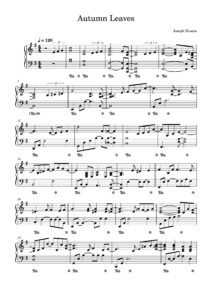 |
|
| Autumn Leaves Joseph Kosma Jazz Standard Piano Solo arr.mscz | ||
| Autumn Leaves Piano Bar Arr. Johnny Mercer Joseph Kosma Jacques André Marie Prévert | Autumn Leaves Piano Bar Arr. Johnny Mercer Joseph Kosma Jacques André Marie Prévert | |
| Autumn Leaves – Jazz Play Along LEAD SHEET MUSIC |
 |
Audio MP3 included in Aebersold’s Vol. 44 (Autumn Leaves) |
| Autumn Leaves – Piano Bar Arr. Johnny Mercer Joseph Kosma Jacques André Marie Prévert (Musescore File).mscz | ||
| Autumn leaves (Eva Cassidy) | ||
| Autumn Leaves As Played By Bill Evans (Musescore File).mscz | ||
| Autumn Leaves Cannonball Adderley And Miles Davis Sax Alto |
 |
|
| Autumn Leaves Music by Joseph Kosma |
 |
|
| Autumn Leaves Piano Solo – as played by Hank Jones.mscz | ||
| Autunm Leaves (Musescore File).mscz | ||
| Avatar – Leona Lewis – I See You |
|
Avatar I see you |
| Avatar sheet music Book James Horner |
|
Avatar |
| Ave Maria (Joyeux Noël OST) Philippe Rombi | ||
| Avenged Sevenfold Nightmare Guitar TAB |
 |
Avenged Sevenfold Nightmare Guitar TAB |
| Avenue Q The Musical Songbook |
 |
Avenue Q The Musical Songbook |
| Avicii – Wake Me Up Sheet Music Piano Vocal Guitar chords |
 |
|
| Avishai Cohen Songbook Vol I |
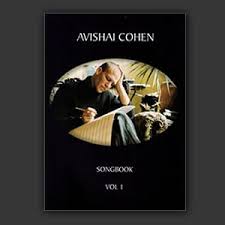 |
Avishai Cohen Songbook Vol I  |
| Avril Lavigne – Complicated | ||
| Avril Lavigne – Freak Out | ||
| Avril Lavigne – Im With You | ||
| Avril Lavigne – Innocence | ||
| Avril Lavigne – My Happy Ending | ||
| Avril Lavigne – When Youre Gone | ||
| Avril Lavigne – Why | ||
| Avril Lavigne the Best Damn Thing Songbook |
 |
Avril Lavigne the Best Damn Thing Songbook |
| Avril Lavigne Under My Skin |
 |
Avril Lavigne Under My Skin |
| Awaken (Jane Eyre OST 2011) Dario Marianelli | ||
| Awakenings Dexter’s Tune by Randy Newman |
 |
|
| Away In A Manger – Guitar TABlature |
 |
|
| Axel F from Beverly Hills Cop b Harold Faltermeyer Piano Vocal Guitar Chords sheet music |
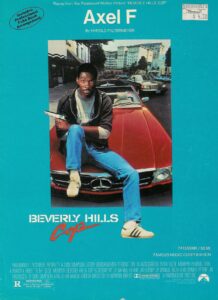 |
|
| Axel Jorgensen ROMANCE for Trombone and Piano Op. 21 |
 |
|
| Aya Hirano – God Knows Suzumiya Haruhi no Yuutsu OST Piano Solo |
 |
|
| Ayumi Hamasaki – Voyage | Ayumi Hamasaki – Voyage | |
| Ayumi Hamasaki All In | Ayumi Hamasaki All In | |
| Aziza Mustafa Zadeh Always Sheet Music |
 |
|
| Aziza Mustafa Zadeh Holiday Blessings |
 |
|
| Aziza Mustafa Zadeh Strange Mood |
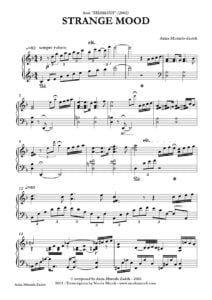 |
|
| Aziza Mustafa Zadeh – Dreaming Sheherezadeh |
 |
|
| Aziza Mustafa Zadeh – Melancholic Princess |
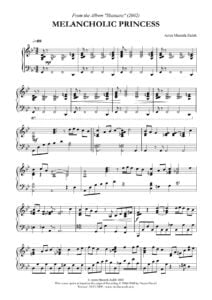 |
|
| Aziza Mustafa Zadeh – Barabashka |
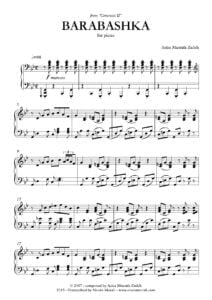 |
|
| Aziza Mustafa Zadeh Two Candles |
 |
|
| B Witched – Cest La Vie | ||
| B Witched – Rollercoaster | ||
| B. B. King Live At The Regal Guitar TAB |
 |
B. B. King Live At The Regal Guitar TAB |
| B.B. King Anthology Guitar TAB |
 |
B.B. King Anthology Guitar TAB |
| B.B. King Greatest Hits |
 |
B.B. King Greatest Hits |
| B.B. King Guitar Play Along Vol. 100 – with MP3 audio embedded with Tablature |
 |
Guitar Play Along Vol. 100 – B.B. King |
| B.B. King The Definitive Collection Guitar Signature Licks with TABs By Wolf Marshall |
 |
B.B. King The Definitive Collection Guitar Signature Licks By Wolf Marshall_compressed |
| Baby Elephant Walk (Hatari OST) Henry Mancini | ||
| Baby Elephant Walk Mancini (Musescore File).mscz | ||
| Babyface, The Songs Of (Kenneth Brian Edmonds) |
 |
Babyface, The Songs Of (Kenneth Brian Edmonds) |
| Bach – Jesu Bleibet Meine Freude Guitar arr.mscz | ||
| Bach – Siciliano In G Minor (Musescore File).mscz | ||
| Bach – Siciliano in G minor Piano solo (Intermediate) |
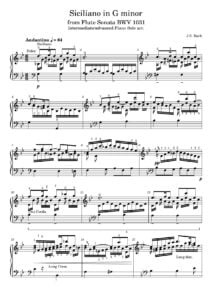 |
|
| Bach J.S. – Aria Mit Variationen Goldberg Variationen Bwv 988 Mit Noten – Sheet Music (Musescore File).mscz | ||
| Bach J.S. – Orchestral Suite No. 1 In C Major Bwv 1066 Passepied (Easy Piano Solo) (Musescore File).mscz | ||
| Bach J.S. For Bass Guitar Mel May Publications |
 |
|
| Bach – Analysis of J.S. Bach’s Wohltemperirtes clavier (48 preludes & fugues) ( Book ) Riemann |
 |
|
| Bach – Arioso (Musescore File).mscz | ||
| Bach – Cello Suite No. 1 In G Major Bwv 1007 Arr. Guitar (Musescore File).mscz | ||
| Bach – Chaconne Bwv 1004 Guitar Arr. (Musescore File).mscz | ||
| Bach – Easy Pieces for Classical Guitar – Notes & Tablature |
 |
Bach – Easy Pieces pieces for guitar |
| Bach – Kurtag – Transcriptions for piano four hands |
 |
|
| Bach – Masterworks of Johann Sebastian Bach ( Book) |
 |
|
| Bach – Music in the Castle of Heaven by John Eliot Gardiner (Book) |
 |
|
| Bach – Praeludium Et Fuga In D Bwv 539 Piano Solo (Musescore File).mscz | ||
| Bach – Prelude And Fugue In A Minor (Bwv 543) (Musescore File).mscz | ||
| Bach – Sheep May Safely Graze (Schafe Könen Sicher Beiden) Aria From The Cantata Bwv 208 Easy Piano |
 |
|
| Bach – Siciliano (Easy Piano arr. from Flute Sonata BWV 1031 with sheet music) |
 |
|
| Bach – Siciliano (Easy Piano Arr. From Flute Sonata Bwv 1031 With Sheet Music) (Musescore File).mscz | ||
| Bach A Life In Music by Peter Williams (2006) Biography Book |
 |
|
| Bach Baden Powell Jesus Bleibet Meine Freude Guitar Tablature Tabs |
 |
|
| Bach Bourée (Piano Solo) Jethro Tull (Musescore File).mscz | ||
| Bach Busoni Complete Transcriptions |
 |
Bach Busoni Complete Transcriptions |
| Bach Bwv 22 – Sanctify Us By Thy Goodness Piano Arr. Harriet Cohen (Musescore File).mscz | ||
| Bach Cello Suite No. 1 In G Major For Guitar (Musescore File).mscz | ||
| Bach Chaconne BWV 1004 Abel Carlevaro Guitar Masterclass IV |
 |
|
| Bach Chaconne D minor arr. for guitar |
 |
|
| Bach Forty Chorales Arr. For Piano Solo |
 |
|
| Bach Fugue In G Minor Bwv 578 (Piano Solo) (Musescore File).mscz | ||
| Bach Fugue Iv Bwv 849 Wtc I (With Sheet Music Noten) (Musescore File).mscz | ||
| Bach Goedicke – Prelude Fugue BWV 539 transcribed for piano |
 |
|
| Bach Gounod Prelude 1 Ave Maria Jazz Improvisation |
 |
|
| Bach Guitar – Fingerpicking Bach (with Tablature) |
 |
Bach Guitar – Fingerpicking Bach |
| Bach J.S. J.S. – French Suites (I to VI) |
 |
|
| Bach J.S. JS – BWV 208 – Sheep May Safely Graze (arr Friedman) | BACH JS BWV 208 | |
| Bach J.S. Air from Orchestral Suite no. 3 in D Major (trans. D. Weymouth) | Bach J.S. -Air-Weymouth | |
| Bach J.S. Jesu, Joy of Man’s Desiring – Piano Arr Groban, Josh |
 |
|
| Bach J.S. – Jazz Play Along Vol. 120 Pdf + Mp3 Audio Tracks |
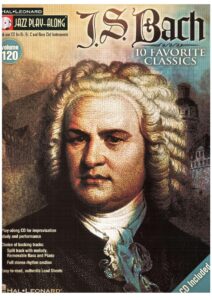 |
Jazz_Play_Along_Vol_120_-_J_S_Bach |
| Bach J.S. – Air on a G String |
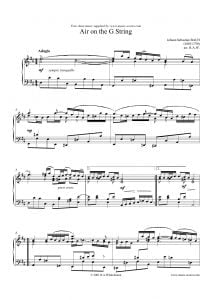 |
|
| Bach J.S. – Busoni Chaconne (piano solo arr.) |
 |
|
| Bach J.S. – BWV 565 Piano – Toccata E Fuga In Re Min | Bach – Bwv 565 Piano – Toccata E Fuga In Re Min | |
| Bach J.S. – Cantata BWV 147 – Coral ‘Jesus Bleibet Meine Freude’ (Easy Piano Solo) | Bach Jesu Joy Of Mans Desiring Cantata Bwv.147 Piano Solo Page 1 Of 5 | |
| Bach J.S. – Das Wohltemperierte Klavier HENLE VERLAG |
 |
|
| Bach J.S. – Easy Pieces for Classical Guitar – Notes & Tablature |
 |
Bach – Easy Pieces pieces for guitar |
| Bach J.S. – English Suites Inglesi (piano) BWV 806-811 |
 |
|
| Bach J.S. – Nun komm, der Heiden Heiland, BWV 659 | Bach, J.S. – Nun komm, der Heiden Heiland, BWV 659 | |
| Bach J.S. – Toccata and Fugue in D minor BWV565 (Piano solo arr. Grainger) |
 |
|
| Bach J.S. – Two Part Inventions Busoni |
 |
|
| Bach J.S. – Well-Tempered Klavier Analysis Part II Dr. H. Riemann |
 |
|
| Bach J.S. – Wilhelm Kempff 10 Bach Transcriptions for piano |
 |
Kempff – 10 Bach Transcriptions |
| Bach J.S. (H Bauer) – Corale Dalla Cantata no. 147 “Jesu, Joy of man’s desiring” BWV 7 (Piano Solo) |
 |
|
| Bach J.S. (Marcello) – BWV 974 -Adagio | Bach (Marcelo) – BWV 974 -Adagio | |
| Bach J.S. 12 Small Preludes |
 |
|
| Bach J.S. 15 Three-voice Inventions |
 |
|
| Bach J.S. 15 Two part Inventions Pure Text Ed. Allan Peterson |
 |
|
| Bach J.S. 6 Partitas( I to VI) |
 |
|
| Bach J.S. AIR ON THE G STRING ARR. SILOTI |
 |
|
| Bach J.S. ARIA SUITE EN RE (arr. for 2 PIANOS) | Bach ARIA SUITE EN RE 2 PIANOS | |
| BACH J.S. Art Fugue Die Kunst der Fuge (Ed. Czerny ) BWV 1080 |
 |
|
| Bach J.S. Art Of Fugue Czerny (Ed. Kalmus) BWV 1080 |
 |
|
| Bach J.S. Busoni BWV564 | ||
| Bach J.S. BWV 1055 keyborad concerto n 4 | ||
| Bach J.S. BWV 971 Italian Concerto | ||
| Bach J.S. Cantata 147 arr. for Easy piano solo | Bach-Jesu-Joy-of-Mans-Desiring-Cantata-BWV.147-Piano-Solo | |
| BACH J.S. CANTATA 22 ARR. PIANO SANCTIFY US BY THY GOODNESS arr. by Harried Cohen |
 |
